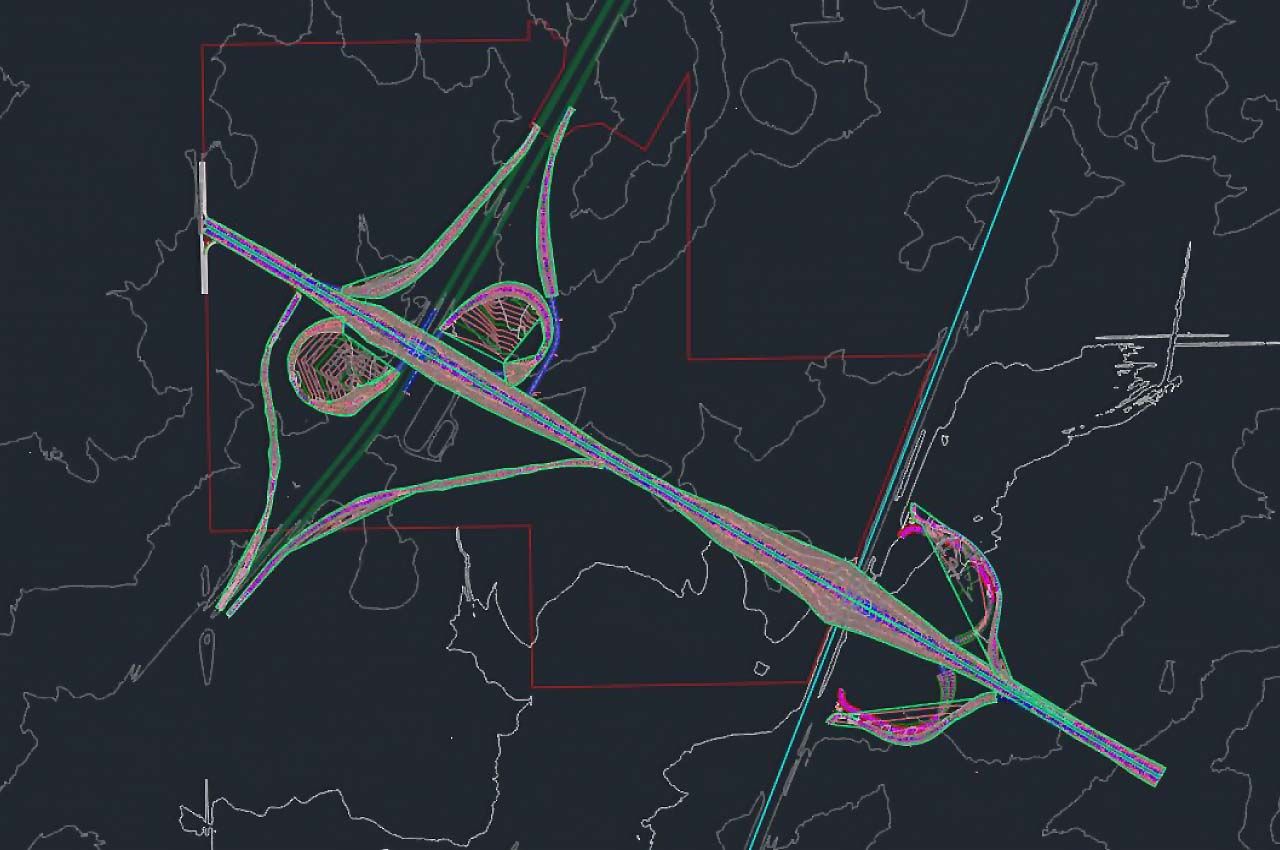Professional Engineers Join the Classroom, Mentoring CAEE Students Through Real-World Projects

Students in the Department of Civil, Architectural, and Environmental Engineering at Illinois Institute of Technology worked with professionals from engineering firms in Chicago to complete ambitious design projects for their senior capstone in spring 2021.
“The course is intended to be specific to what our students will be doing two weeks after they graduate, whether that’s design or construction management. What is the engineering workflow? How do you take a project from an owner’s request to the final sign off?” says Adjunct Faculty Laurence Rohter, who led the course.
Each year graduating students take on real-world projects for which they develop detailed design plans. The spring 2021 projects included designing changes to a highway interchange, the construction of an affordable housing unit, the expansion of city bike paths, upgrades to a railroad bridge, and the installation of sidewalks near a school.
One group worked in Paul V. Galvin Library, using equipment donated by Trimble, to create state-of-the-art 3D scans of the climate control equipment and to determine what needs to be updated to achieve better climate control in the space.
“I am keenly aware of what employers like me are seeking in new grads,” says Jean-Alix Peralte (CE ’89, MBA ’96), president of Peralte-Clark, LLC, who says through his involvement as a mentor in the course he was able to provide that practical training to the students.
The CAEE department connected each team with a professional engineer who acted as a mentor throughout, and additional industry professionals were involved as subject matter experts. The engineers helped the students set the project scope, overcome challenges, and identify resources, and they also occasionally gave spontaneous and insightful lectures.
“One of the subject matter experts, Lindsay Zanders [office managing director at WSP], attended one of our meetings and gave an impromptu hour and 15 minute lecture. I wish I had a recording, because it was like a TED Talk for electrical engineering in buildings,” says Rohter.
“[The course] provides students with a real-world example of the way these projects are delivered and the processes and procedures involved,” says one of the mentors, John P. O’Neill (CE ’89), vice president and senior project manager at BLA, Inc. “This makes them a more valuable employee because they now have some familiarity with some of the tasks that they will be asked to perform and will require less guidance.”
Juan Zambrano’s (CE ’21) team was mentored by O’Neill through its project evaluating upgrades to a high-traffic highway interchange. Now he works as a construction engineer/inspector at WSP USA.
Zambrano says, “In an accelerated duration, we were able to work through the proposal and preliminary design phases of a project. Working with John really helped us start off in the right direction and also got us back on track whenever we ran into some challenges. It’s super beneficial to work with these mentors while in this course so that they can keep us updated on the current and future industry trends.”
Mentors helped students handle complex situations such as identifying and complying to the latest local design codes; for example, the team of students assessing upgrades to a railroad bridge had to consider the fact that the bridge was situated in the middle of a national wildlife refuge. Rohter says mentors coached the team through the multistakeholder situation and brought the issue to the class as a whole so that all students had a greater understanding of how to work in environmentally protected areas.
“This was good practice in communication, scheduling, and project management as we all had to work together to ensure the successful completion of the project within the project deadline,” says Lewis Ndikumana (ARCE ’21), a student in the course who now works as a plumbing engineer at dbHMS. “Our industry mentors helped us translate our theoretical understanding of engineering concepts to a real-world situation.”
The development of this course toward bringing students in closer contact with local engineers, and the companies that many Illinois Tech graduates go on to work for, is part of the department’s overall commitment to preparing students for employment.
“This new model for capstone senior design is designed to uniquely leverage Illinois Tech’s location within the city of Chicago, America’s hub for the architecture, engineering, and construction industries, to provide a real-world engineering design experience and to provide opportunities for professional mentorship and development”, says Brent Stephens, CAEE department chair and professor of architectural engineering.
Other efforts in the department to bring industry into the classroom include helping first-year students find and obtain internships during the summer after their first year, supporting a student-run department-specific career fair, and bringing an industry-sponsored competition to their flagship construction cost estimating course.
All industry mentors involved, as well as Rohter himself, are registered professional engineers. Registration is an essential step in providing approvals for buildings and infrastructure projects. The Illinois Tech engineering curriculum directly supports students in the process of obtaining their professional registration.
“Infrastructure investment is seeing an uptick across the United States, particularly here in Illinois, and that sector needs talented young engineers to deliver the work that is ahead of us,” says O’Neill.
Rohter is confident that this course is developing that talent.
“Having done it for a semester, I would not make a single change. We’ll continue to find additional projects depending on the students’ interests, and we’ll continue to bring in new mentors, but overall it has been a perfect application for where we want to be as a department,” says Rohter.
Image: Autodesk Civil 3D plan view of highway interchange project plans by Gilberto “Junior” Andrade, Juan Pablo Zambrano, Piotr Maciolek, Shlok Shah, and Wm. Stefan Herzing




